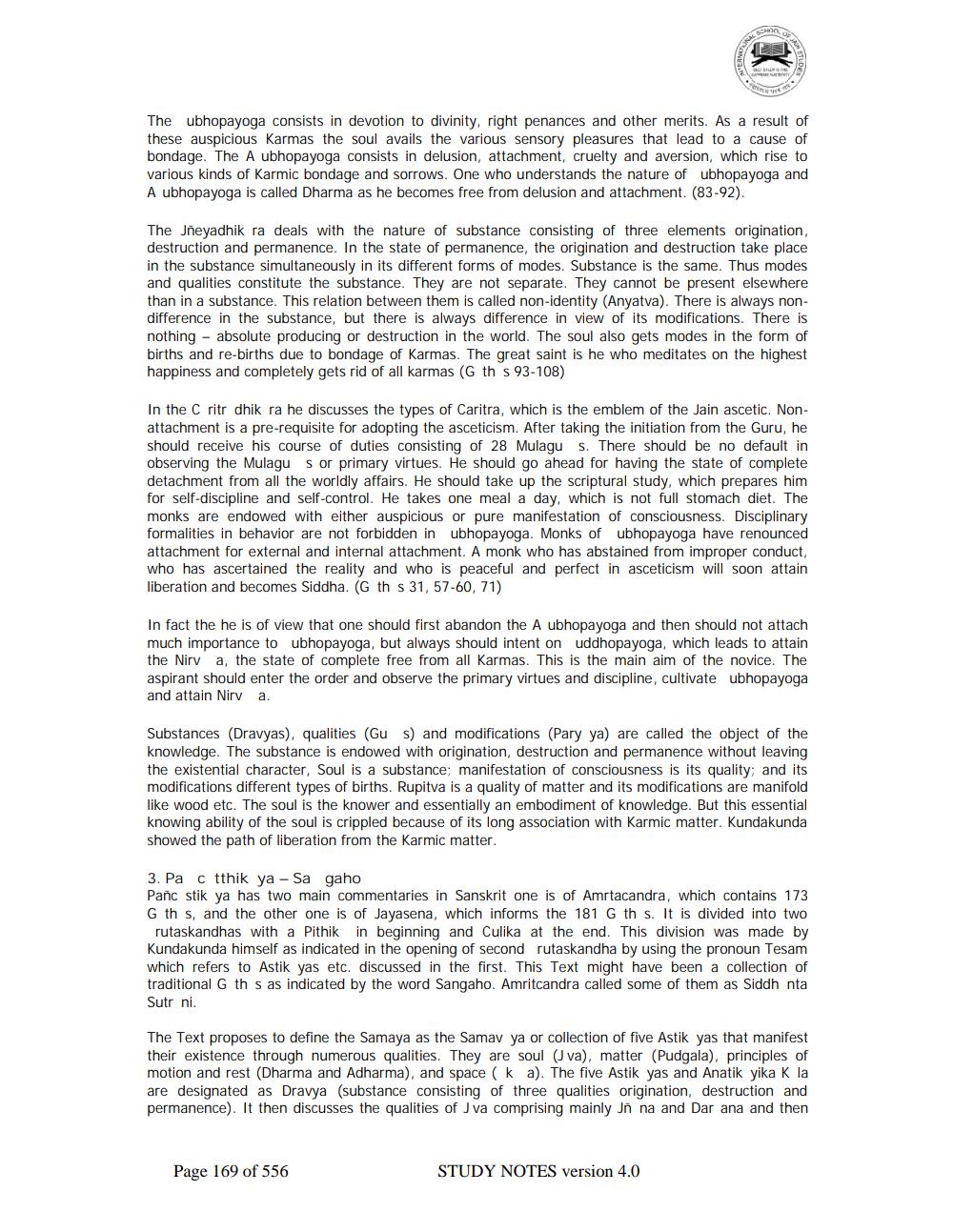________________
The ubhopayoga consists in devotion to divinity, right penances and other merits. As a result of these auspicious Karmas the soul avails the various sensory pleasures that lead to a cause of bondage. The A ubhopayoga consists in delusion, attachment, cruelty and aversion, which rise to various kinds of Karmic bondage and sorrows. One who understands the nature of ubhopayoga and A ubhopayoga is called Dharma as he becomes free from delusion and attachment. (83-92).
The Jneyadhik ra deals with the nature of substance consisting of three elements origination, destruction and permanence. In the state of permanence, the origination and destruction take place in the substance simultaneously in its different forms of modes. Substance is the same. Thus modes and qualities constitute the substance. They are not separate. They cannot be present elsewhere than in a substance. This relation between them is called non-identity (Anyatva). There is always nondifference in the substance, but there is always difference in view of its modifications. There is nothing - absolute producing or destruction in the world. The soul also gets modes in the form of births and re-births due to bondage of Karmas. The great saint is he who meditates on the highest happiness and completely gets rid of all karmas (G th s 93-108)
In the Critr dhik ra he discusses the types of Caritra, which is the emblem of the Jain ascetic. Nonattachment is a pre-requisite for adopting the asceticism. After taking the initiation from the Guru, he should receive his course of duties consisting of 28 Mulagu S. There should be no default in observing the Mulagu s or primary virtues. He should go ahead for having the state of complete detachment from all the worldly affairs. He should take up the scriptural study, which prepares him for self-discipline and self-control. He takes one meal a day, which is not full stomach diet. The monks are endowed with either auspicious or pure manifestation of consciousness. Disciplinary formalities in behavior are not forbidden in ubhopayoga. Monks of ubhopayoga have renounced attachment for external and internal attachment. A monk who has abstained from improper conduct, who has ascertained the reality and who is peaceful and perfect in asceticism will soon attain liberation and becomes Siddha. (
Gth s 31, 57-60, 71)
In fact the he is of view that one should first abandon the A ubhopayoga and then should not attach much importance to ubhopayoga, but always should intent on uddhopayoga, which leads to attain the Nirva, the state of complete free from all Karmas. This is the main aim of the novice. The aspirant should enter the order and observe the primary virtues and discipline, cultivate ubhopayoga and attain Nirva.
Substances (Dravyas), qualities (Gus) and modifications (Pary ya) are called the object of the knowledge. The substance is endowed with origination, destruction and permanence without leaving the existential character, Soul is a substance; manifestation of consciousness is its quality, and its modifications different types of births. Rupitva is a quality of matter and its modifications are manifold like wood etc. The soul is the knower and essentially an embodiment of knowledge. But this essential knowing ability of the soul is crippled because of its long association with Karmic matter. Kundakunda showed the path of liberation from the Karmic matter.
3. Pa ctthik ya - Sa gaho Pañc stik ya has two main commentaries in Sanskrit one is of Amrtacandra, which contains 173 Gth s, and the other one is of Jayasena, which informs the 181 G th s. It is divided into two
rutaskandhas with a Pithik in beginning and Culika at the end. This division was made by Kundakunda himself as indicated in the opening of second rutaskandha by using the pronoun Tesam which refers to Astik yas etc. discussed in the first. This Text might have been a collection of traditional G th s as indicated by the word Sangaho. Amritcandra called some of them as Siddh nta Sutr ni.
The Text proposes to define the Samaya as the Samay ya or collection of five Astik yas that manifest their existence through numerous qualities. They are soul (Jva), matter (Pudgala), principles of motion and rest (Dharma and Adharma), and space (ka). The five Astik yas and Anatik yika K la are designated as Dravya (substance consisting of three qualities origination, destruction and permanence). It then discusses the qualities of J va comprising mainly In na and Dar ana and then
Page 169 of 556
STUDY NOTES version 4.0




